
How to get URL link on X (Twitter) App

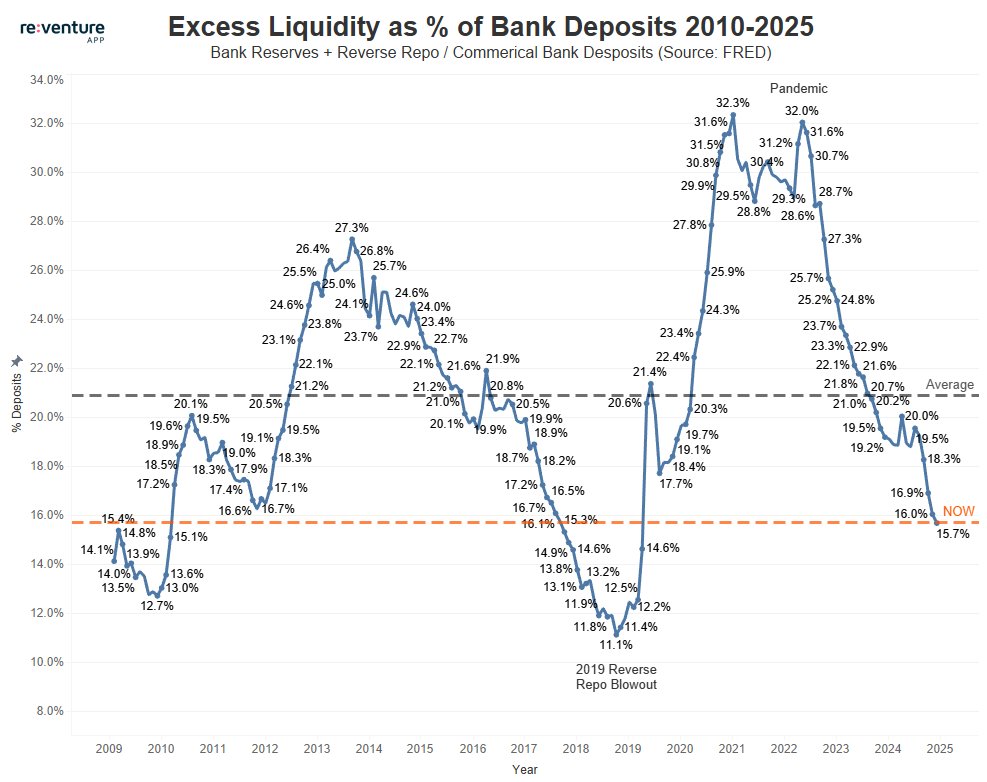
 1) There are several metrics you can use to gauge how much reserve liquidity the Fed needs in the system for their "ample reserves" regime - one is GDP, another is M2, but my personal favorite to gauge this is bank deposits.
1) There are several metrics you can use to gauge how much reserve liquidity the Fed needs in the system for their "ample reserves" regime - one is GDP, another is M2, but my personal favorite to gauge this is bank deposits.
 1) The other obvious conclusion from the graph above is that finding a way to drive down the cost to buy a house would help unlock the housing market.
1) The other obvious conclusion from the graph above is that finding a way to drive down the cost to buy a house would help unlock the housing market. 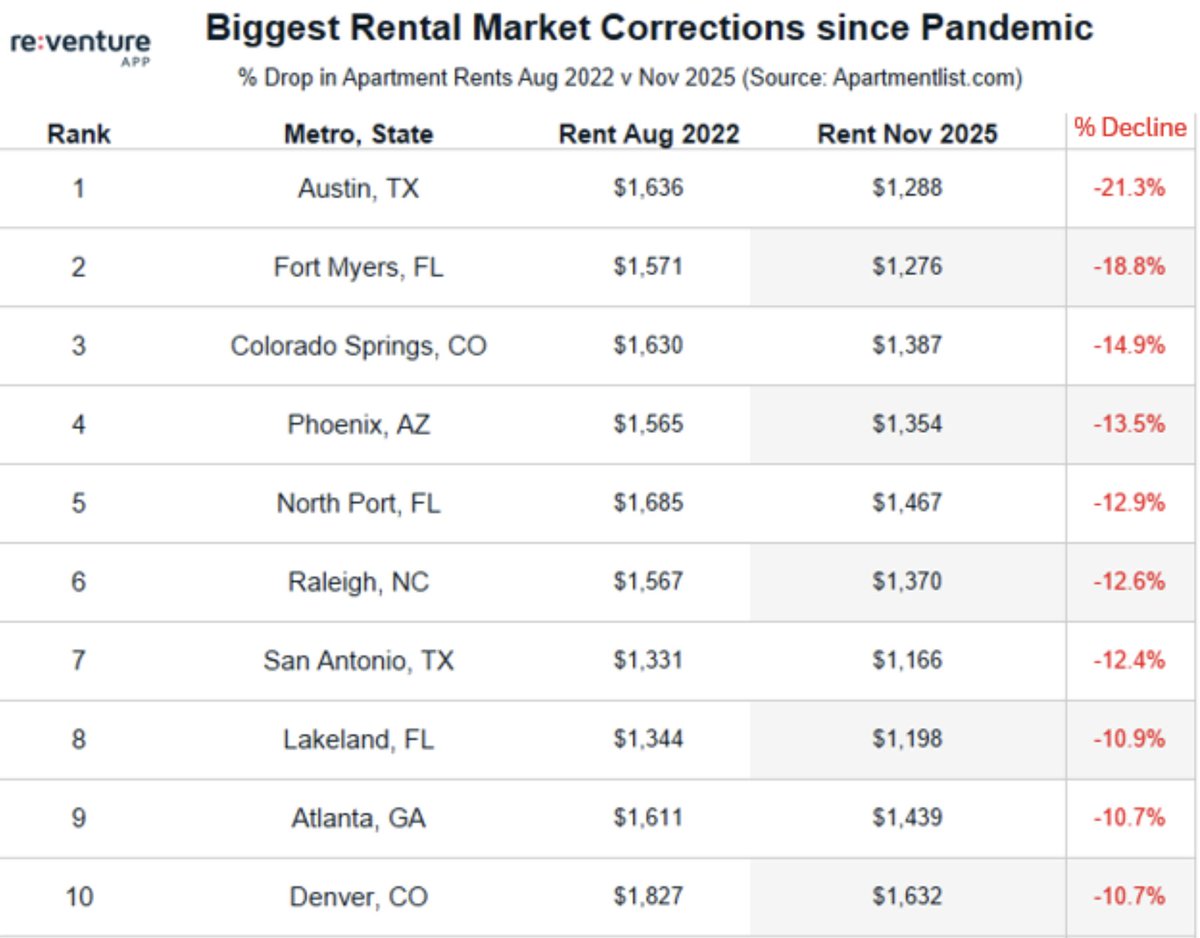
 1) The deflationary rental environment, particularly in the Sun Belt area of America, is one reason why I believe we'll continue to see more inventory hit the market next year.
1) The deflationary rental environment, particularly in the Sun Belt area of America, is one reason why I believe we'll continue to see more inventory hit the market next year.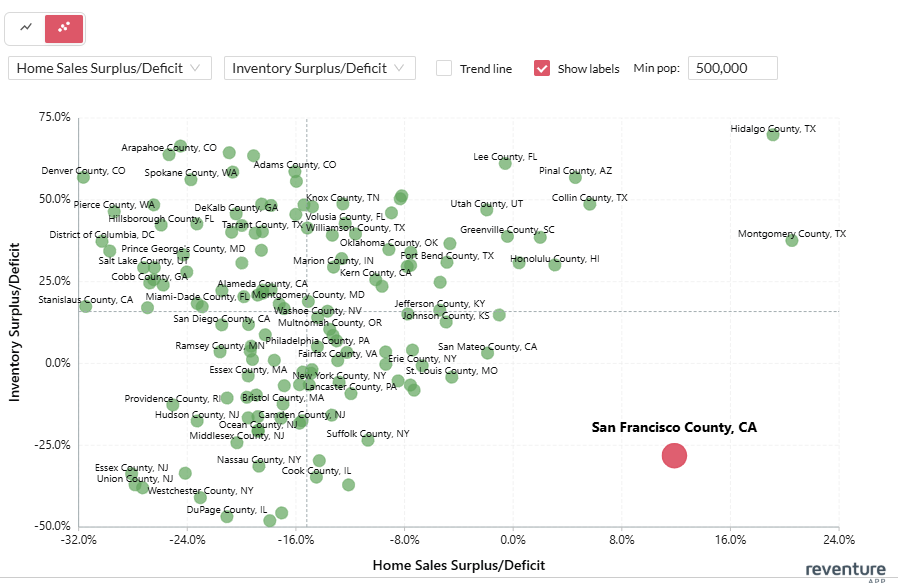
 1) Of course - let's not forget that San Francisco was one of the weakest housing markets in America since the pandemic.
1) Of course - let's not forget that San Francisco was one of the weakest housing markets in America since the pandemic.
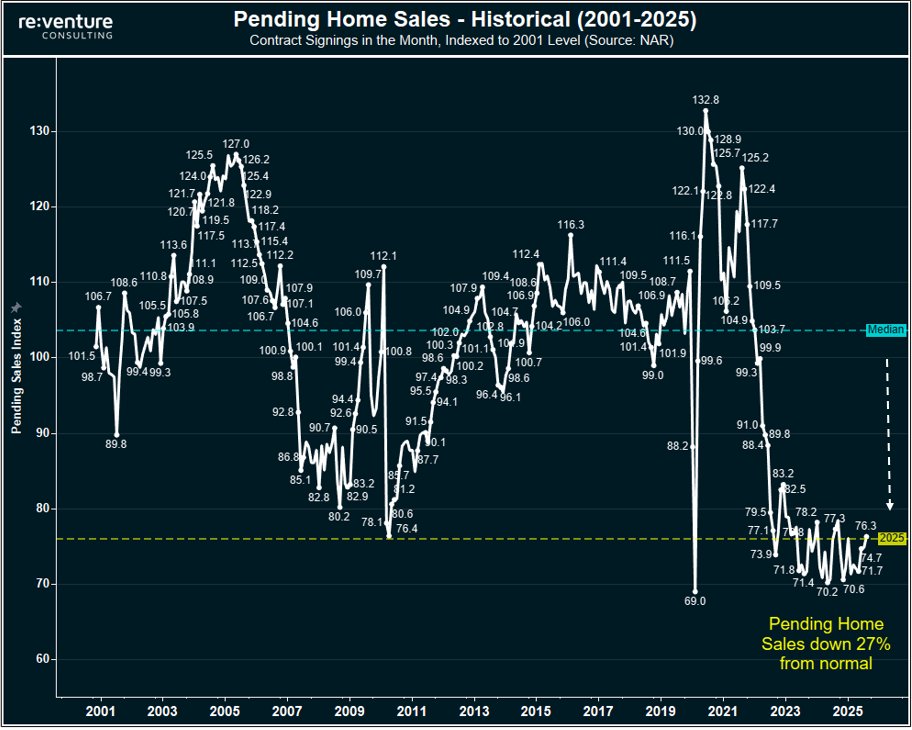
 1) I can't stress enough how crazy it is that NAR's Pending Sales figures just came in -1.2% below last year.
1) I can't stress enough how crazy it is that NAR's Pending Sales figures just came in -1.2% below last year.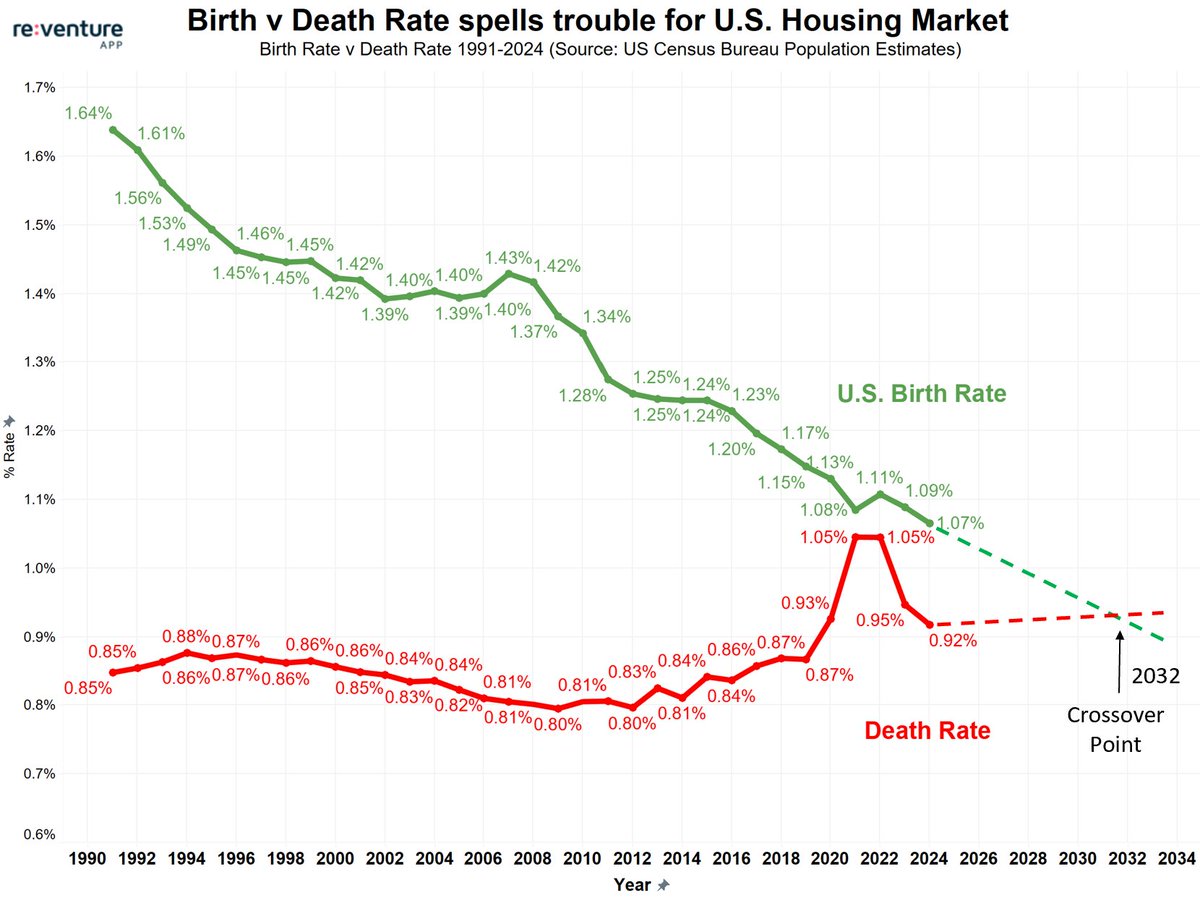
 1) Many participants in the housing market are ignoring this issue, as if it does not provide a positive outlook for home prices, and it's also still another 6-7 years off.
1) Many participants in the housing market are ignoring this issue, as if it does not provide a positive outlook for home prices, and it's also still another 6-7 years off.
 1) This bifurcated market has taken many in the housing industry by surprise, as most analysts expected the boomtown Southern states to continue appreciating.
1) This bifurcated market has taken many in the housing industry by surprise, as most analysts expected the boomtown Southern states to continue appreciating. 

 1) Here's the chart from the CoStar article. -0.31 rent growth in October.
1) Here's the chart from the CoStar article. -0.31 rent growth in October. 

 1) While many are frustrated that home prices are still near all-time highs, the reality is that a housing market trending towards 0% nominal home price growth is one already well into a recession, given how abnormally low this appreciation is.
1) While many are frustrated that home prices are still near all-time highs, the reality is that a housing market trending towards 0% nominal home price growth is one already well into a recession, given how abnormally low this appreciation is.
 1) The housing market is actually fairly simple when you adopt a longer term outlook:
1) The housing market is actually fairly simple when you adopt a longer term outlook: 
 1) It's interesting to think about how different the real estate investing landscape was back in the 1950s.
1) It's interesting to think about how different the real estate investing landscape was back in the 1950s.
 1) Home builder inventory is actually near a record high in 2025, while existing inventory is not even close to a record.
1) Home builder inventory is actually near a record high in 2025, while existing inventory is not even close to a record.

 1) Rising stock market valuations are continuing to drive consumer spending in America, with the Top 10% of U.S. households by income now driving nearly 50% of Consumer spending, according to Moody's.
1) Rising stock market valuations are continuing to drive consumer spending in America, with the Top 10% of U.S. households by income now driving nearly 50% of Consumer spending, according to Moody's.

 1) The shift in interest rate composition of existing mortgage holders will have a big impact on new listings in future quarters and years.
1) The shift in interest rate composition of existing mortgage holders will have a big impact on new listings in future quarters and years.
 1) Lennar's new order book is 2x bigger than it was prior to the pandemic, and they're gaining a massive amount of market share.
1) Lennar's new order book is 2x bigger than it was prior to the pandemic, and they're gaining a massive amount of market share.
 1) Fed cut rates almost one year ago, and demand went down.
1) Fed cut rates almost one year ago, and demand went down. 

 1) It's wild to see how rents in Austin have changed over the last six years.
1) It's wild to see how rents in Austin have changed over the last six years. 
 1) Plummeting natural growth can have a variety of consequences for the U.S., and is primarily driven by two factors:
1) Plummeting natural growth can have a variety of consequences for the U.S., and is primarily driven by two factors:
 1) Today's premium to buy of $713/month is one of the highest on record, and a key reason why homebuyer demand is near record lows.
1) Today's premium to buy of $713/month is one of the highest on record, and a key reason why homebuyer demand is near record lows.
 1) In June 2025, it was roughly 8% or $33,500 cheaper to buy a new house from a builder than to buy an existing house.
1) In June 2025, it was roughly 8% or $33,500 cheaper to buy a new house from a builder than to buy an existing house.